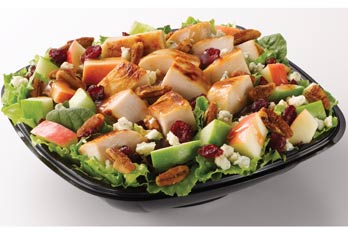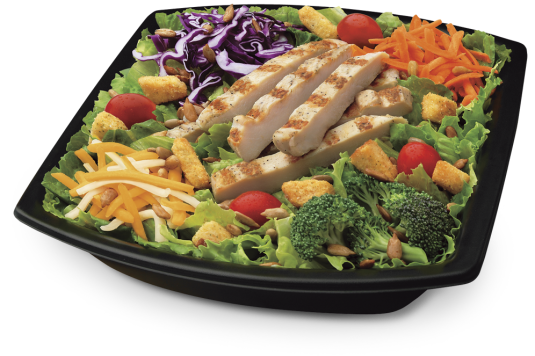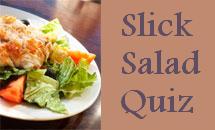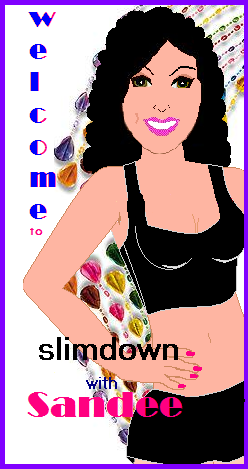Yesterday I went over my calorie goal for the first time since the new year. 29 days of successfully limiting my calorie intake to under 1600 a day and yesterday I went over by almost 40o calories? How did this happen? I blame it on the salads.
I hosted a women’s meeting potluck event at my church last night and I ate just a bite or two each of several salads and a small piece of Weight Watcher’s Peanutbutter Pie. When I got home I looked these salads up on the web and did my best to estimate their caloric intake. The pie was only 120 calories but some of the salad were as much as 270 calories for a 1/2 cup serving. I sabatoged myself with the salad.
I love Salad. I especially love salad with no lettuce, lots of cucumbers, carrots, onions, cheese, beets, ham, bacon, and ranch dressing. Needless to say, my favorite salad isn’t very healthy for me. So, more often than not, I skip the salad.
Salads, done right, can be healthy, flavorful, and low-cal options – but only if done right and more often than not they are not. Early in my dieting days I would often choose a salad as my dinner when eating out. It sounded right. You always hear people talk about eating salad when on a diet. I thought it must be the low calorie option and I wasn’t alone in this misconception. An April 2011 Time Heartland article intitled “When Is A Salad Not A Salad” discusses this problem.
The label alone was enough to influence the dieters’ — but not the nondieters’ — ratings. When the product was called pasta, the dieters rated it as significantly less healthy than non-dieters did. Interestingly, however, when it was given the “healthy” name, salad, it led to no difference in rating between the two groups. (But, overall, dieters believed the same dish, when called salad, was healthier.)
As I began to count calories for myself, this truth became aparent. Often a “salad” offered at a resturant would have double the calories and fat grams of a similarly priced and more hunger satisfying meal option. For example, an Applebee’s Bruchetta Chicken Salad sounds healthy but is over 1100 calories while their entire Roasted Sirloin Dinner with portabella mushrooms and creamed spinach is under 550 calories. Is the salad really the better option?
Clearly some salads are better options than others. The WebMD article Myth or Truth: Salad Is The Best Diet Food compares a couple of resturant salad’s and points out that the “fixins” make the diffrence.
“Consider: A chicken Caesar salad at Chili’s (loaded with salad dressing, croutons, cheese, and chicken) will set you back 1,010 calories and 76 grams of fat. On the other hand, a Chick-fil-A chargrilled chicken garden salad with fat-free honey mustard dressing has only 230 calories and 6 grams fat.”
Some of the salad’s I experimented with last night seemed harmless. One was bok choy with a clear dressing, some almonds, and a little bit of ramen noodles. It looke harmless but turned out to be over 500 calories a serving. It was awfully yummy but not filling enough to make an entire meal on.
Many resturant salads also sound like a nutritious choice but then are loaded with topping like croutons, bacon bits, and high fat dressings. When unhealthy main dish meats like deep fried chicken and processed deli meats are poured over lettuce and presented as a “healthy option” you should opt out. Think before you order. Weigh the options. If possible pre-plan your ordering looking at calorie count online ahead of time.

A personal favorite that I think is filling and every bit worth the 560 calories, Wendy's Apple Pecan Grilled Chicken Salad.
I don’t want to discourage you from eating flavorful raw veggies in great combinations. Salads can be a healthy, yummy, low-cal choice but watch out for the “add ons”. If you decide you want a delicious salad stick to one that is mostly veggies with lean meat, egg, low-fat cheese, or other healthy options topping it. Choose a low-fat, low-cal dressing or skip the dressing and opt for salsa (available at most resturants and often as little as 10 calories for 1/4 cup) or sprinkle your salad with a little salt and pepper. If you love a creamy dressing and feel it’s a must, order it on the side and dip the tines of your fork in the dressing before picking up the salad. This way you get some of the flavor on every bite, with fewer calories than drowning the whole plate.
Do you think you can pick a healthy salad option? Click on the picture below to take the Slick Salad Quiz at diet.com to check your diet IQ.







